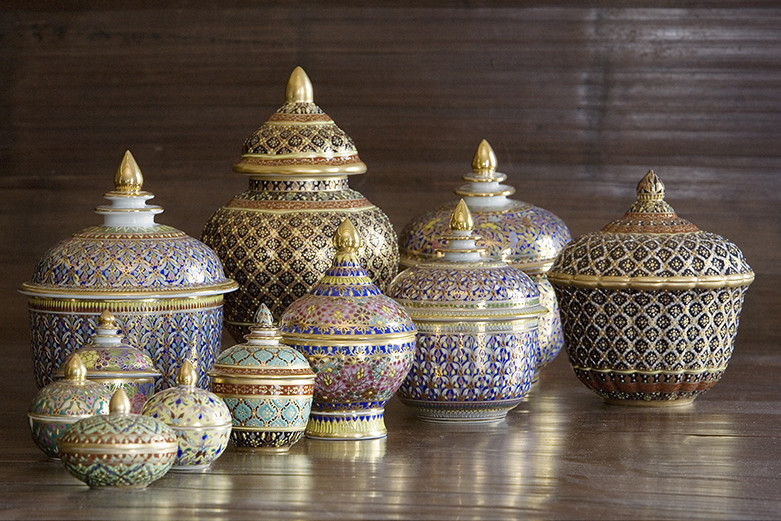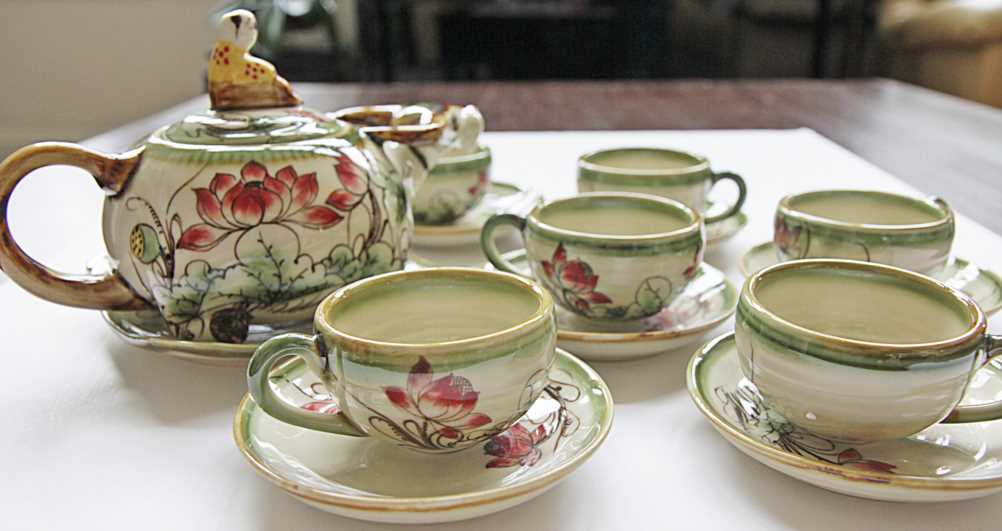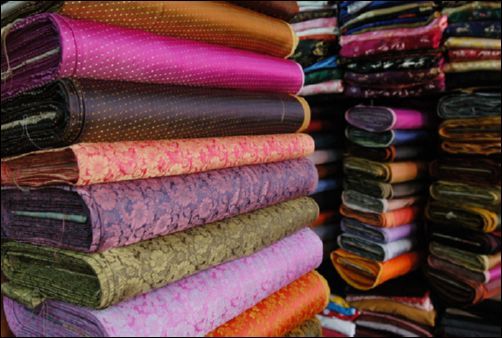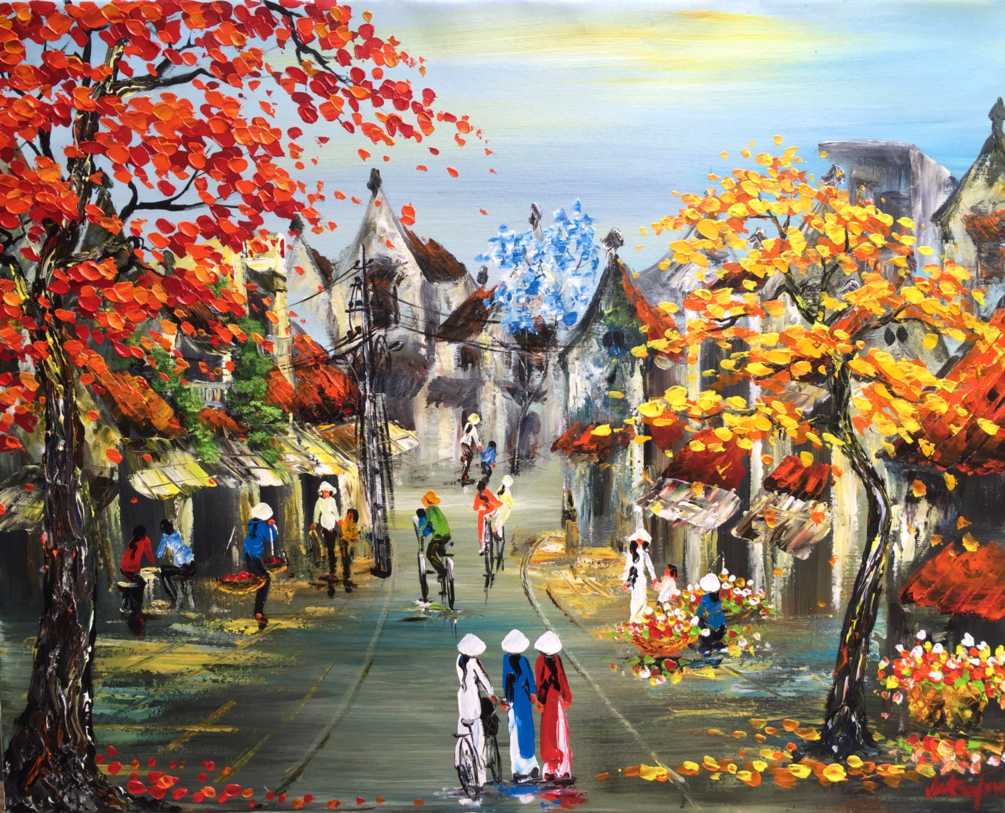The Beginner’s Guide To The Creative Manufacturing And Handmade In Southeast Asia
Jun 20, 2022 | Abdul Rahman
 Southeast Asia is well-known for their colorful languages and traditions. In this guide, we’re going to take a look at the different creative manufacturing and products in some of the most appealing countries in Southeast Asia and observe their market trade sustainability and activity. The countries included in this article are Malaysia, Indonesia, Thailand, Cambodia and Vietnam due to their distant geolocation but somehow relative cultural tradition and beliefs.
Southeast Asia is well-known for their colorful languages and traditions. In this guide, we’re going to take a look at the different creative manufacturing and products in some of the most appealing countries in Southeast Asia and observe their market trade sustainability and activity. The countries included in this article are Malaysia, Indonesia, Thailand, Cambodia and Vietnam due to their distant geolocation but somehow relative cultural tradition and beliefs. 1. Introduction
2. Malaysia
2.1 Wayang Kulit
2.2 Batik Cloth
2.3 Tekat Embroidery
2.4 Labu Sayong
2.5 Sape
3. Indonesia
3.1 Barong Mask
3.2 Coral Bangles
3.3 Miniature Wooden Figurine
3.4 Gemstones
4. Thailand
4.1 Benjarong
4.2 Buddha Statue
4.3 Buddhist Amulet
4.4 Miniature Shrine
4.5 Phuang Malai
5. Cambodia
5.1 Krama
5.2 Phra Ngan
5.3 Elephant Bell
6. Vietnam
6.1 Bamboo Basket
6.2 Metal Gong
6.3 Tea Set
6.4 Silk Fabric
6.5 Oil Painting
7. Sourcing Challenges and Opportunities
7.1 Labor Cost
7.2 Export Worth
7.3 Tariffs
7.4 Language Barrier
7.5 Vacation Time
8. Summary
2. Malaysia
Source: https://commons.wikimedia.org/wiki/File:Flag_of_Malaysia.svg
2.1 Wayang Kulit (Shadow Puppet)

Source: https://upload.wikimedia.org/wikipedia/commons/9/99/Wayang_sejarah.jpg
In Malaysia, wayang kulit are emphasized in the role of light and shadow, with mythological characters at play. Just like a regular puppet show, this cultural activity has a puppeteer called the Dalang. The Dalang is hidden behind the stage, only controlling his puppets with sticks attached to the puppets' respective joints and limbs while impersonating them through voices. This puppet show will also be accompanied with a group play of traditional instruments called gamelan. Usually, the stories portrayed are comedy-based for the folks to relax after the harvesting season until it starts to rain again.
As of the writing of this blog, a movement group has been made to revive Malaysia's signature Wayang Kulit. Fusion Wayang Kulit, founded by Tintoy Chuo, has created several masterpieces based on popular modern characters such as Darth Vader, Batman and so much more. Their products are so great they have even been interviewed by worldwide companies such as CNN and the History Channel.
Wholesale source: https://www.fusionwayangkulit.com/
2.2 Kain Batik (Batik Cloth)

Source: https://i0.wp.com/khairulabdullah.com/wp-content/uploads/2021/10/batik.jpg?resize=900%2C600&ssl=1
Batik painting is a traditional method of painting a piece of cloth with abstract and colorful design. Here, batik painting is referred to as "mencanting batik" where the word 'batik' is a combination of Javanese words, 'amba' and 'nitik'. In the 17th century, Sultan Mahmud ('Sultan' is equivalent to 'king') commanded Laksamana Nadim ('Laksamana' is the old title of a marine lieutenant) to find 140 foliage fabric with 40 different flower designs. After voyaging, he couldn't find one so he made his own design hence the creation of the Malay's batik. Batik cloth is still a popular handicraft in Malaysia and often used as the material of both formal and casual clothings.
Wholesale source: https://shopee.com.my/panyong_97?categoryId=100014&itemId=9023037111
2.3 Seni Tekat (Embroidery)

Source: http://4.bp.blogspot.com/-C0keWGoGtPU/VH_3kG1748I/AAAAAAAAAn0/b5PmMkCLHcY/s1600/tekat.jpeg
In Malaysia, there is an exclusive craft known as Seni Tekat, which is embroidery using gold or silver thread. Tekat embroidery is focused in Perak and Negeri Sembilan plus having similarities with the Chinese of Baba Melaka. During the Malacca Sultanate, the royalties were the only ones who are allowed to have tekat in their clothings. Any civilians or rich people are prohibited to wear tekat unless they are blessed by the Sultan. Therefore, tekat weavers were largely taken care of in the castle for the appointed purpose. Nowadays, tekat is widely practiced by people in Malaysia and often sold as decorations. Due to the patience and skill needed to complete an excellent tekat embroidery, they are sold at higher prices.
Wholesale source: https://dev.mycraftshoppe.com/shop/gesamas-sendirian-berhad
2.4 Labu Sayong

Source: https://www.carousell.com.my/p/labu-sayong-lot-of-6-1077629223/
The eponymous Sayong region, specifically Kampung Kepala Bendang, Kuala Kangsar, Perak is the home of the Labu Sayong creation. Tuk Kelok was the first to introduce Labu Sayong from Minangkabau during the reign of Sultan Iskandar (1984-2010). With that, Tuk Kelok is bestowed with a handful of land by the King for helping the town folks with his skills of swordmaking and clayshaping. Labu Sayong is used to store water as a plastic bottle for us nowadays. Labu Sayong may differ from sizes, but they alway retrain the same form of having a large base and converging top.
Wholesale source: https://dev.mycraftshoppe.com/shop/tempayan-kreatif-enterprise
2.5 Sape

Source: https://twitter.com/malaysiaasia/status/1105647922786590720
The Dayak tribe of Sarawak is the predecessor of the instrument known as Sape. Made from wood and strings, this instrument shares similar characteristics and uses as a regular guitar or other string-based musical instrument. The tale of Sape goes by a fisherman who went to the sea but his boat got wrecked and he got washed ashore. As he slowly gained consciousness, he heard an astounding rhythm coming from the surrounding ambience sourced from the forest and rivers. Determined to imitate the same rhythm that mesmerized him, he modified the pieces of what’s left of his boat into a musical instrument which is the first of Sape. Sape is played during public events, birth ceremonies, wedding ceremonies, and post-harvesting seasons much like any other traditional instruments. Sape is also played with the companionship of male and female dancers dressed in traditional gowns decorated with Manik and hornbill feathers. Sape can easily be made with plant fibers and wood.
Wholesale source: https://shopee.com.my/Sapelele-Guitar-(Sape-Sarawak)-i.53884572.1208715472?xp tdk=95f9be0c-9faf-4fc6-8784-104f599aae59
3. Indonesia

Source: https://en.wikipedia.org/wiki/Flag_of_Indonesia

Source: https://i.pinimg.com/originals/80/46/8a/80468a0eed84689e8ff4aa2249efa83e.jpg
The Balinese Mask represents the mythical deity known as Banaspati Raja or “King of the Forest”. Therefore, the masks are usually lion-like but they can also take any other forms of animals such as wild boar, tiger, dog etc. Common features of the mask are large bulging fake eyes highlighted with pigments, two tusks converging from the sides of its mouth and thick mane surrounding the head, sometimes under the lower lip to give a beard-like appearance. Banaspati Raja is also recognised as Barong Ket, hence the alternative name of Balinese Mask. In the Balineses society, Barong Masks are considered to be a sacred item as they believe that these masks are inhibited by the will of Banaspati Raja. Therefore, the Balinese often ask blessings of these masks to restore the balance of cosmic forces or seek protection from their community. These masks can be found on altars, at ceremonial and theatrical events and sometimes reincarnated by a fully-costumed native. It is said that if an audience falls into trance during one of the ceremonies or performances, they have succeeded in invoking the spirit of Banaspati Raja.
Wholesale source: https://www.etsy.com/market/barong_mask?ref=pagination&page=5

Source: https://i.etsystatic.com/14196335/r/il/1c628d/2603946779/il_794xN.2603946779_tid6.jpg
Coral bangles are handcrafts made from a marine animal in the class of Anthozoa (corals, sea anemones). There 3 types of coral can be found in Indonesia which are the black (most common), red and white corals. The people of Indonesia believe that this animal brings thousands of benefits to the wearer. One claims that the corals consist of radium which emits low level radioactivity that helps regulate ions and energy in the body thus improving health and vitality. It is also said that the corals are actually used by the Prophet Solomon to punish those genies that have convicted crimes by tying them with the corals at the bottom of the sea. Hence, this gave them the idea that besides physical advantages, the corals also gave them some kind of spiritual protection; able to repel black magic and witchcraft. On further note, the corals may also bring peace to the mind and heart, sharpen one’s intuition and so much more. Ultimately, the corals are often found to be shaped into accessories like bracelets and rings as good luck charms.
Wholesale source: https://www.etsy.com/shop/IndonesiaExotic?ref=simple-shop-header-name&listing_id=1237078298
3.3 Miniature Wooden Figurine

The art of carving miniature wooden figurines begins from the people of Nias in North Sumatra, Indonesia and also known as Ono Niha (“Descendants of human”). Nias people are divided into three regions, the North, Central and the South with each region having their own different ways of carving wooden figurines. Common traits of these sculptures include a humanoid semblance that is mostly nude with a piece of clothing covering the hips if any. The gender role is very clear and they often wear traditional jewelry. The purpose of this activity is mainly to respect and glorify the past ancestors. Figurines carved into the shape of their ancestors are made to conserve fertility of the family, livestock and fields. There are also figurines made to serve as a protection totem. The variation amongst the statute also reflects the social status and wealth of to whom the statue is made for or the person that the statue represents. More information about the craft can be found here.
Wholesale source: https://www.borneoartifact.com/product-category/tribal-sculptures/
3.4 Gemstones

Source: http://www.indonesiangems.com/
Indonesia is so lucky to have fertile volcanic earth as their main soil composition as it becomes the largest deposit of many beneficial minerals and gemstones. People in Indonesia have been foraging for these precious jewels for years as they believe that these gemstones possess a variety of metaphysical powers. The most bustling region is at South Kalimantan on the island of Borneo as the natives there keep on harvesting the gemstones to be sold to tourists as souvenirs and therefore, quick cash. One of the gemstones abilities is healing which can be shown by the amethysts, agates, idocrases, nephrites and chrysocolla. In 2015, the business of gemstone trading skyrocketed as Indonesia President Susilo Bambang Yudhoyono gave Barack Obama a chrysocolla stone.
Wholesale source: https://www.etsy.com/shop/V3shopDesign?ref=simple-shop-header-name&listing_id=1038501312
4. Thailand

Source: https://www.britannica.com/topic/flag-of-Thailand
4.1 Benjarong

Source: https://www.flickr.com/photos/rctravel/5441133886
Benjarong is an exclusive technique of making porcelain items that have been used since the Ming Dynasty in China. Benjarong comes from the words ‘Benja’ and ‘Rong’ which literally means ‘five’ and ‘colors’ respectively. This is due to the multi-layered enamels (usually five of them) being delicately painted on a white porcelain base. Other than that, the enamel layers also help bring out the background color of the porcelain, with geometrical patterns spreaded all across the surface of it. Some Benjarong even take the risk to have lavish gold to further portray wealth and formality. The motifs painted on the Benjarong are of traditional Thai such as floral, plants and flames. There are also cultural symbols like the mythical Garuda, the god Vishnu and several emblems of past Thai kings. Long time ago, Benjarong was only used for royal courts and aristocrats but nowadays everyone can have one to their considerations.
Wholesale source: https://www.thaibenjarong.com/
4.2 Buddha Statue

Source: https://www.pinterest.com/pin/653796070880799436/
In the 14th Century AD, the Sukhothai kingdom was liberated from the Khmers by King Sri Indrathit. Since then, the king adopted Buddhism based on a Sri Lankan School and there is rapid development of Sukhothai Buddha statues. The Buddha statues are typically three-dimensional, either made from wood, clay, stone or metal or any other suitable building material. The most prominent statue is the head statue because as quoted, “...the Buddha heads are taken as the representation of an ideal reality of the Buddha and that every Buddha heads stands at the end of a succession of the images reaching back to the Buddha himself,” However, the modern Buddha statues does not represent the historic Gautam Buddha, but instead a replica of from the Sukhothai kingdom images.
Wholesale source: https://www.originalbuddhas.com/catalog/buddha-heads-of-buddha
4.3 Buddhist Amulets

Source: https://www.thailandamulet.net/thai-amulets-in-store-january-2018/
The Buddhist amulets are sacred items worn to grant the wearer with supernatural faculties. These amulets can take different shapes and forms, with different abilities. Though, the common material of amulets are plaster, bone, wood or metal. These amulets also are reminders of Buddhist teachings and agents of the Buddha’s magical power. Such power can help bring success and happiness to one or protection against disease, witchcraft and misfortune. The most conventional form of the Buddhist amulets is Buddha in a state of meditation by sitting on a porcupine which is a terracotta Pan variety amulet that protects the wearer from dangers.
Wholesale source: https://www.thailandamulet.net/amuletstore/#!/All-Thai-Amulets/c/967279
4.4 Miniature Shrine

The miniature shrine is from the Buddhists’ belief that there are guardian spirits protecting near houses, temples, farmlands, rivers and even one’s self. Therefore, a small shrine or altar is made to honor these spirits so that they bless their homes or business. This will eventually bring good fortune to the land owners. However, if one fails to fulfill their requests or doesn't respect their existence, they might be overwhelmed with misfortune and bad luck. These shrines can be simply designed or elaborately decorated with tiny figurines inside of them. The figurines are intended to ‘entertain’ the spirits so such figurines can resemble servants, dancers or animals such as elephants and tigers. To show utter respect, the shrines must be placed at an easily visible location and not hidden in shades.
Wholesale source: https://www.etsy.com/market/thai_altar?ref=seller_tag_bottom_image-1
4.5 Phuang Malai (Flower Garland)

Source: https://gate20.com/2012/12/14/what-the-heck-is-phuang-malai-thailand/
Phuang and Malai literally translate into ‘string/bunch’ and ‘garland’ in Thai. They are made from simple materials such as fresh flowers, ribbons, needle and cotton threads. Puang Malai has two main functions which are as ‘Malai Chai Deaw’ (offering to shrines) and ‘Malai Song Chai’ (draped around someone’s neck to show importance). There is no recorded history of when Phuang Malai originated but rumors say that it has existed since the reign of King Rama V during the mid-19th Century. Phuang Malai is meant to bring luck and fortune to those who were so in Thailand, there are several places where you will find them. For example, Phuang Malai can be found in motor vehicles to help protect from accidents and Phuang Malai also can be seen as offerings to Buddhist statues and newly-wed brides and grooms. A few of Phuang Malai types are the Creature Malai where the flowers are arranged to resemble an animal and Chained Malai where a series of rounded Malai connected together to form a chain.
Wholesale source: https://www.ebay.com/itm/284164159941
5. Cambodia

Source: https://en.wikipedia.org/wiki/Flag_of_Cambodia
5.1 Krama

Source: https://www.insightguides.com/inspire-me/blog/the-krama-the-story-behind-cambodias-chequered-scarf
The usage of scarves have never been as creative and diverse as the one shown in Cambodia. Krama is a type of scarf made from cotton or silk with traditionally red-and-white or blue-and-white checks. The use of Krama long dated since the Angkor period so there have been a lot of ways of how Krama is presented among the people of Cambodia. Krama can be wrapped at any part of the body to give protection from sun, dust, wind, cold and even rain. For women, Krama helps them carry things like chickens and small livestocks when going to or back from markets. Krama also is used by bokator fighters as belts to show their ranks; White being the first or earliest grade, following green, blue, red, brown, black and ultimately gold.
Wholesale source: https://www.kramakrama.com/en/shop
5.2 Phra Ngan

Source:
https://ourmagicalrealm.wordpress.com/what-is-phra-ngan/
Phra Ngan is the name of a mountain deity from Khmer, Cambodia. Phra Ngan is also called Ghost King or Demon King and has 7 different forms This powerful creature resembles a Buddha but has a pointy tip and wears a crown. Existing since the Ayutthaya period (1351-1767), its amulets can grant the bearer abilities such as increased charisma, block black magic and increased luck. The creature can be good or evil depending on the wearer however. These amulets are often found made of metal, sometimes bone and rarely jade. The eyes of Phra Ngan are also commonly found in red due to several historical tracks.
Wholesale source: https://oldthaiamulets.com/product-category/phra-ngan/

Source: https://store.barakatgallery.com/product/khmer-bronze-elephant-bells/
As the name persists, the elephant bells were worn by marching elephants during the Khmer Empire in 1200 to 1300. The bells are usually large, made of metal or bronze. These bells are hung on the elephants’ saddles and rings loudly as the animal moves. Royal elephants who adorn these bells are often to establish power and exert superiority. Even when not in use, the bell alone can appear elegant and lavish due to its size and appearance.
Wholesale source: https://www.etsy.com/listing/884755135/bell-elephant-bronze-cambodia-elephant
6. Vietnam

Source: https://www.istockphoto.com/photos/vietnam-flag

Source: https://www.alibaba.com/product-detail/Wholesale-Vietnam-Small-round-bamboo-basket_50037324742.html
The craft of bamboo weaving started when a man, Nguyễn Văn Soi who was born in Phú Vĩnh, Hà Tây was formally recognised as a craft ancestor by the People’s Committee in 2008. He gained the skills of bamboo weaving while traveling with his father in Thanh Hóa Province and once he got back to his village, the Xóm Thượng village, he shared his knowledge with the younger generations. Therefore, the ancestor’s descendants of Vietnamese have been using this technique to create objects from bamboo, natural fibers, and grasses to be sold and fund their living.
Wholesale source: https://www.etsy.com/shop/CasaDiJenny?ref=simple-shop-header-name&listing_id=722200529
6.2 Metal Gong

Metal gongs in Vietnam are used to play a special music called the Tay Nguyen Gong music that is from the Tay Nguyen region. Metal gongs are played for religious ceremonies and can also be for musical purposes. In Vietnamese culture, every family must have at least one gong. The gong also determines the status of the owner. For example, the bigger and older the gong is, means that the owner is a very rich person. It is also said that the gong is a way of communication with the gods and deities, thus their role in the religious events. Gongs are most usually played by men, but there are some ethnic groups where only women play them. While doing so, they always wear colorful traditional costumes.
Wholesale source: https://gongs-unlimited.com/collections/gongs-of-vietnam
6.3 Tea Set

Source: https://vietnameseartwork.com/Item.aspx?ItemID=10336
As tea is one of the most popular beverages other than plain water, Vietnam has been making tea drinking as part of their culture for generations. In ancient times, Vietnamese opted for drinking tea using a bowl to taste the fresh leaves of tea. While nowadays some people still follow the traditional ways, there are also those who prefer the usage of teacups and teapots to portray more elegance and cultural-importance. Formal ceremonies in Vietnam usually include ceramic or porcelain cups with abstract and beautiful designs engraved on its shimmering hard body. This design also is synchronized between the teacups and the teapots as a set to show the preference of the owner. Vietnameses drink tea all day round whether during summer or winter season. In hot seasons, the teacups used are much thinner and lighter while in cold seasons the teacups are thicker to help balance out the temperature of the tea better. Glass tea cups are also available but it is for informal use and doesn't have good thermal resistance.
Wholesale source: https://www.etsy.com/market/vietnamese_tea_set
6.4 Silk Fabric

Source: https://www.pinterest.co.uk/pin/196680708696665024/
The silk fabric is unique as not many countries all around the world can produce them. One of the lucky countries is Vietnam. In Vietnam, silk is made by cultivating mulberry trees so they can grow and become a habitat for the silkworms who later on releases silk filaments. There is also an alternate way of producing silk which is by harvesting the lotus stalk but this method is not as popular as the silkworm maybe due to the huge delay for the production of the stalks. Silk fabric is a great product both for domestic and export purposes because they have good heat absorption as they are comfortable to wear whether in summer or winter season. Silk fabric is available as a standalone cloth or can also be found in manufactured form like Ao Dai, silk robes, silk scarf or silk cravat. Silk paintings and silk lanterns are further examples of the use of silk fabric.
Wholesale source: https://vietnamsilkhouse.com/en/?actilang=true
6.5 Oil Painting (Tranh Son Dau)

Source: https://vietnameseartwork.com/Item.aspx?ItemID=9780
The art of oil painting in Vietnam started in 1925 when the French opened Indochine Fine Arts School. At that time, the oil painting technique was still new so lots of scholars were engrossed to learn more about the new way of art under the two French teachers namely Victor Tardieu and Joseph Inguimberty. The education process was a success and they were amazed by the results created by their Vietnamese students although the material is quite hard to handle. The basic color needed for an oil painting is cadmium yellow, ochre gold, cadmium red, alizarin crimson, ultramarine blue, titanium white and mars black. Other than that, the painter can mix between the base colors to create a new color. Standard tools also include oil painting mixing knife, paint palette canvas and white spirits for the initiating process. In the current time, the favorite theme of Vietnamese oil paintings are based on sceneries and people.
Wholesale source: https://www.etsy.com/market/vietnamese_painting
7. Sourcing Challenges and Opportunities
7.1 Labor Cost (Minimum Wage)
From the table, we can see that the country with the lowest labor cost is Indonesia but it also has the highest labor cost (due to Jakarta being one of most bustling cities). One can consider approaching any country with the lowest minimum wage or dependable to one’s budget.
7.2 Export Worth (Dec 2021)
The table below shows the export worth of each country upon December 2021. It is safe to say that Vietnam has the highest grossing export value compared with the other countries.
7.3 Tariffs (Export Taxes)
The country that shows the highest tariffs is Vietnam. This supports the data that Vietnam will have the highest export values in December 2021 assuming the tariffs are unchanged.
7.4 Language Barrier
Here lists the estimated percentage of the population of each country that can speak English comfortably. Choosing a country with a high percentage such as in Malaysia is important to ensure communication is well between services and companies but there is also an option to hire a relevant intermediate for simplicity.
7.5 Vacation Time
Source: https://www.nationthailand.com/international/30360605
Selecting a country with the best vacation time is also vital so that any orders will not collide with their respective holidays. However, the least number of holidays does not necessarily mean higher working productivity as holidays can be a need for some people.
8. Summary
From all of the laid out information, there will be no more doubts on choosing your best country and their respective unique products. You also can always refer to more websites online or contact the right person for further understanding. Starting a new business is hard, so planning is the vital part of doing so. We don’t have the power to change the rules and regulations of the countries, but we can pinpoint our movement by taking necessary actions to attract the desired outcomes. Good luck.
Recommended



Wholesale / B2b Kathputli Puppets From Ahemdabad
Dec 16, 2024





